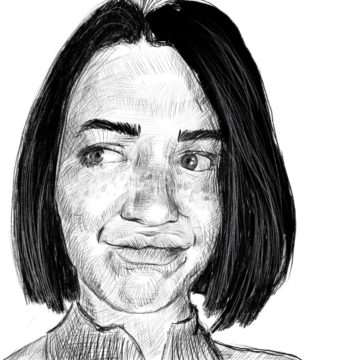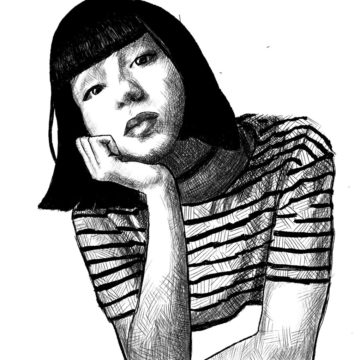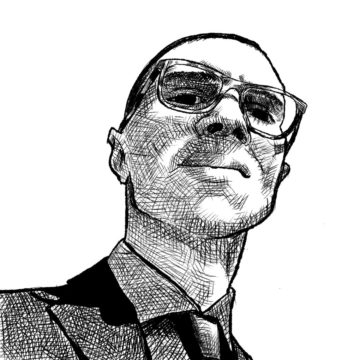I started drawing when I was 3. Writing started later, but my earliest surviving stories were from age 6. Photography started in sophomore year in high school when my father and I built a darkroom in our basement, and my mother bought me a cheap Russian SLR. Code didn’t enter the scene until I was 25 and bought a Commodore 64. All of those are forms of expression I never let go of.
Here’s an old joke:
A young man arrives in New York City by bus and asks a passing taxi driver, “How do I get to Carnegie Hall?”
The old cabbie shouts back, “Practice!”
“Many a true word hath been spoke in jest.” Chaucer wrote. The only way to get better at a thing is to practice. If you want to know my secret to learning how to draw, it’s simple. Draw every day. I promise you, even if you think you can’t draw if you really want to learn to draw — start drawing a face every day for 30 days. Find photos online and draw one every day.
You will think you suck. That’s part of the learning process. You can’t get better if you think your drawing is good, trust me. But don’t let that feeling stop you. Draw every day. Try to do better. Sometimes you will. Sometimes you won’t. Keep drawing.
Then at the end of 30 faces. Compare the first drawing with the last. You’ll see improvement.
Want to get even better? Keep drawing faces. Then draw animals. Then draw figures. 30 of each. Draw every day. Keep at it. Buy a book on drawing when you find one that interests you. Sign up for online drawing courses if they’re cheap. At the end of 100 days, compare your first face with your last drawing. You’ll see improvement.
The way AI researchers teach machines to do any task is to have them run through millions of attempts. Here’s a video of AI researchers teaching their machines to play hide and seek. The secret is practice. The machine plays the game millions of times. (I could watch that video on loop for hours.) Being a neural network, Artificial Intelligence has a feature: Practice turns into improvement if the goals are simple and clearly stated.
Learning to draw is a perfect goal for a neural network to learn. Mission: represent an image using lines and shading to achieve a recognizable likeness. Press start and several million failures later, an artist. Wombo Studios, the makers of Dream the big #WritingCommunity craze of late 2021, used similar techniques to teach it to create stunning works of art from 100 characters of text description.
So, if it works for Artificial Intelligence, why shouldn’t it work for natural intelligence? The answer is that all the techniques used by a silicon neural network apply to organic ones. The difference is time. A computer can cycle through a million drawings in a few minutes. I’ve been drawing for 60 years. I doubt I’ve reached ten thousand. I had better get to work.
I think about this anytime I skip a day of drawing. I also think about this when I don’t love my results. It lends a degree of forgiveness to know that, even with an imperfect result, my neural net is learning, correcting, correcting, and improving.
Hi Ho.



